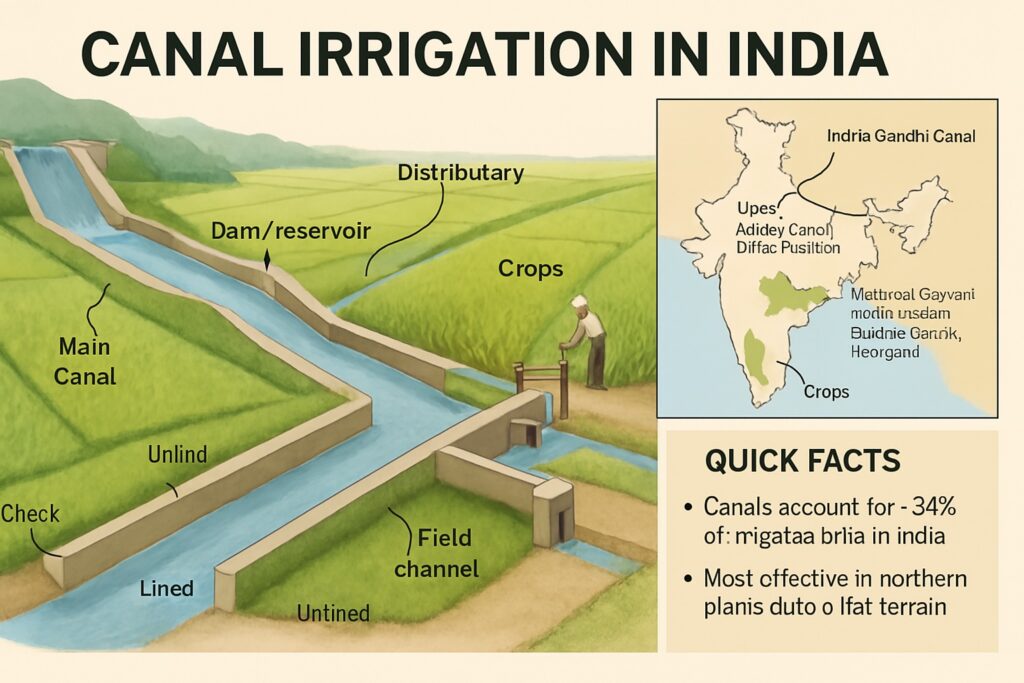India is an agrarian economy where over 50% of the population depends on agriculture for their livelihood. Since rainfall is uneven and seasonal, irrigation plays a crucial role in ensuring agricultural productivity. Irrigation infrastructure refers to the systems and facilities that help distribute water to agricultural fields through artificial means such as canals, wells, and tube wells.

Table of Contents
Types of Irrigation Systems in India
- Canal Irrigation
- Canals are man-made channels that carry water from rivers to fields.
- Major canal systems exist in Punjab, Haryana, Uttar Pradesh, and Rajasthan.
- There are two types: perennial (year-round) and inundation (seasonal) canals.
- Tank Irrigation
- Tanks are small reservoirs that collect rainwater.
- Common in southern states like Tamil Nadu, Karnataka, and Andhra Pradesh.
- Useful in hilly and plateau regions.
- Well and Tube Well Irrigation
- Wells are traditional sources, while tube wells are deep and mechanized.
- Prominent in the alluvial plains of Uttar Pradesh, Bihar, and West Bengal.
- Suitable where groundwater is available in plenty.
- Drip and Sprinkler Irrigation
- Modern methods used for water conservation.
- Drip irrigation delivers water directly to plant roots, ideal for arid areas.
- Sprinklers simulate rainfall and are effective on uneven land.
- Widely used in Maharashtra, Gujarat, and parts of Rajasthan.
Major Irrigation Projects
- Bhakra Nangal Project – Himachal Pradesh and Punjab
- Indira Gandhi Canal – Rajasthan
- Tungabhadra Project – Karnataka and Andhra Pradesh
- Sardar Sarovar Project – Gujarat
- Hirakud Dam – Odisha
These multipurpose projects provide irrigation, hydroelectricity, and flood control.
Challenges in Irrigation Infrastructure
- Uneven Distribution: Northern India is well-irrigated, but southern and eastern regions still face water scarcity.
- Over-extraction of Groundwater: Excessive use of tube wells has led to falling water tables.
- Poor Maintenance: Many canal systems suffer from siltation and leakages.
- Inefficiency: Traditional methods result in a lot of water wastage.
Government Initiatives
- Pradhan Mantri Krishi Sinchayee Yojana (PMKSY) – “Har Khet Ko Pani” initiative aims to expand irrigation coverage.
- Accelerated Irrigation Benefit Programme (AIBP) – Assists states to complete incomplete irrigation projects.
- Per Drop More Crop – Promotes micro-irrigation for efficient water use.
Conclusion
A robust irrigation infrastructure is essential for food security, rural development, and sustainable agriculture in India. While considerable progress has been made, modernizing the existing systems, promoting water-use efficiency, and expanding equitable access remain vital for the future of Indian agriculture.
Read: Geography Notes